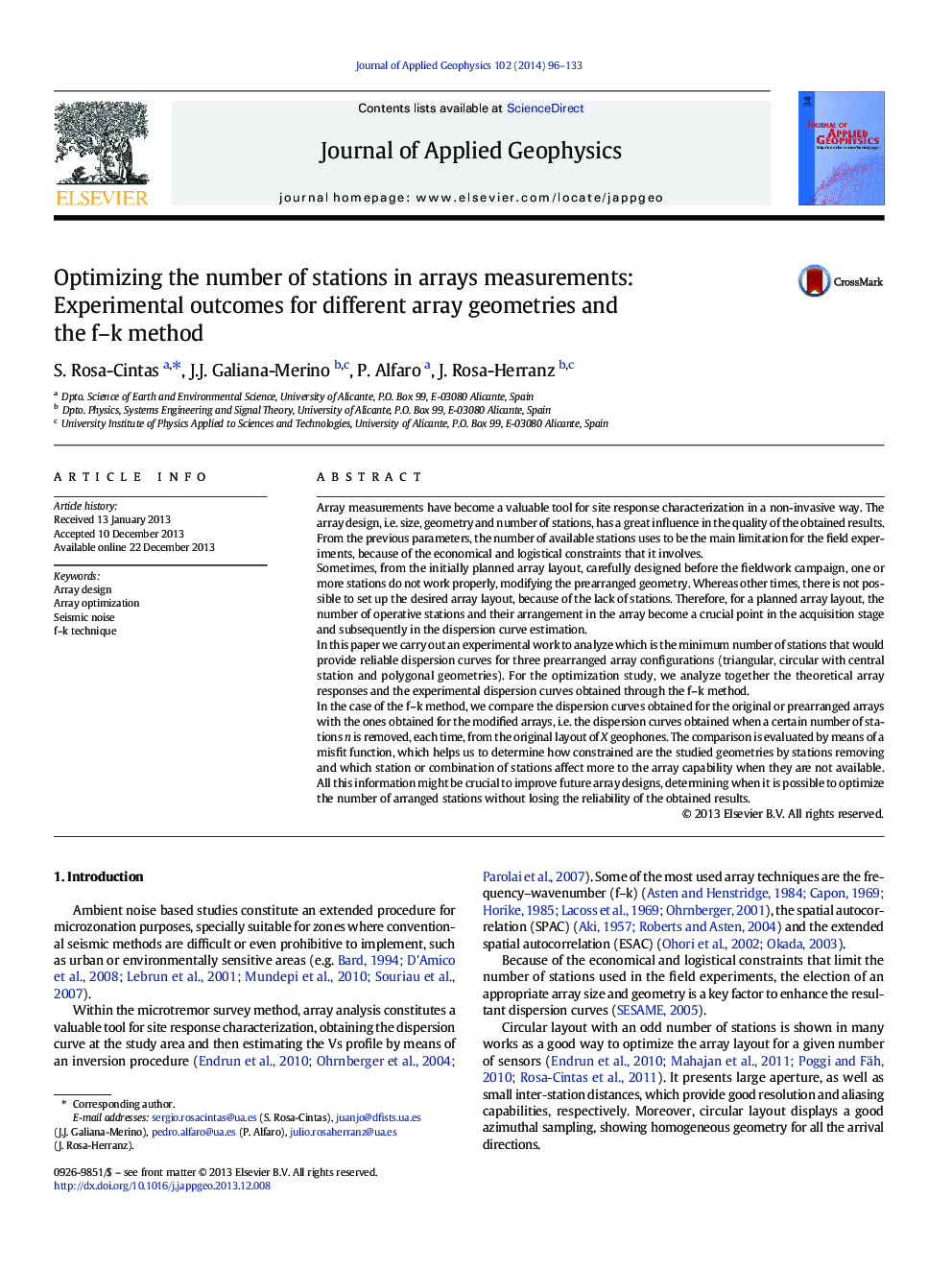| کد مقاله | کد نشریه | سال انتشار | مقاله انگلیسی | نسخه تمام متن |
|---|---|---|---|---|
| 4740187 | 1641149 | 2014 | 38 صفحه PDF | دانلود رایگان |

• We analyze the stations suppression influence in the dispersion curve calculation.
• We compare 3 array layouts: triangular, circular with central station and polygonal.
• Comparison of the obtained dispersion curves is done by means of a misfit function.
• The study improves future array designs by optimizing the number of stations arranged.
Array measurements have become a valuable tool for site response characterization in a non-invasive way. The array design, i.e. size, geometry and number of stations, has a great influence in the quality of the obtained results. From the previous parameters, the number of available stations uses to be the main limitation for the field experiments, because of the economical and logistical constraints that it involves.Sometimes, from the initially planned array layout, carefully designed before the fieldwork campaign, one or more stations do not work properly, modifying the prearranged geometry. Whereas other times, there is not possible to set up the desired array layout, because of the lack of stations. Therefore, for a planned array layout, the number of operative stations and their arrangement in the array become a crucial point in the acquisition stage and subsequently in the dispersion curve estimation.In this paper we carry out an experimental work to analyze which is the minimum number of stations that would provide reliable dispersion curves for three prearranged array configurations (triangular, circular with central station and polygonal geometries). For the optimization study, we analyze together the theoretical array responses and the experimental dispersion curves obtained through the f–k method.In the case of the f–k method, we compare the dispersion curves obtained for the original or prearranged arrays with the ones obtained for the modified arrays, i.e. the dispersion curves obtained when a certain number of stations n is removed, each time, from the original layout of X geophones. The comparison is evaluated by means of a misfit function, which helps us to determine how constrained are the studied geometries by stations removing and which station or combination of stations affect more to the array capability when they are not available. All this information might be crucial to improve future array designs, determining when it is possible to optimize the number of arranged stations without losing the reliability of the obtained results.
Journal: Journal of Applied Geophysics - Volume 102, March 2014, Pages 96–133